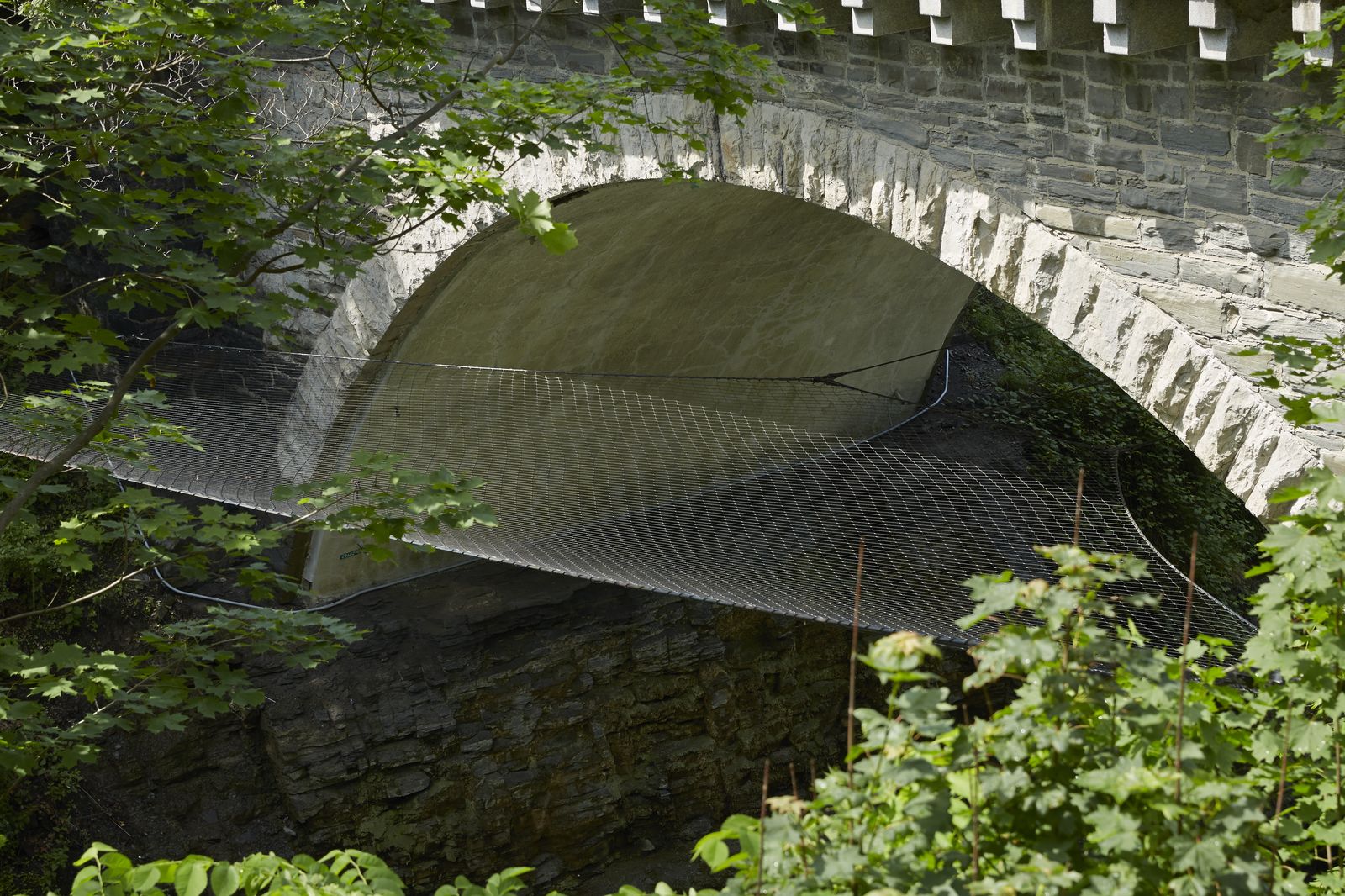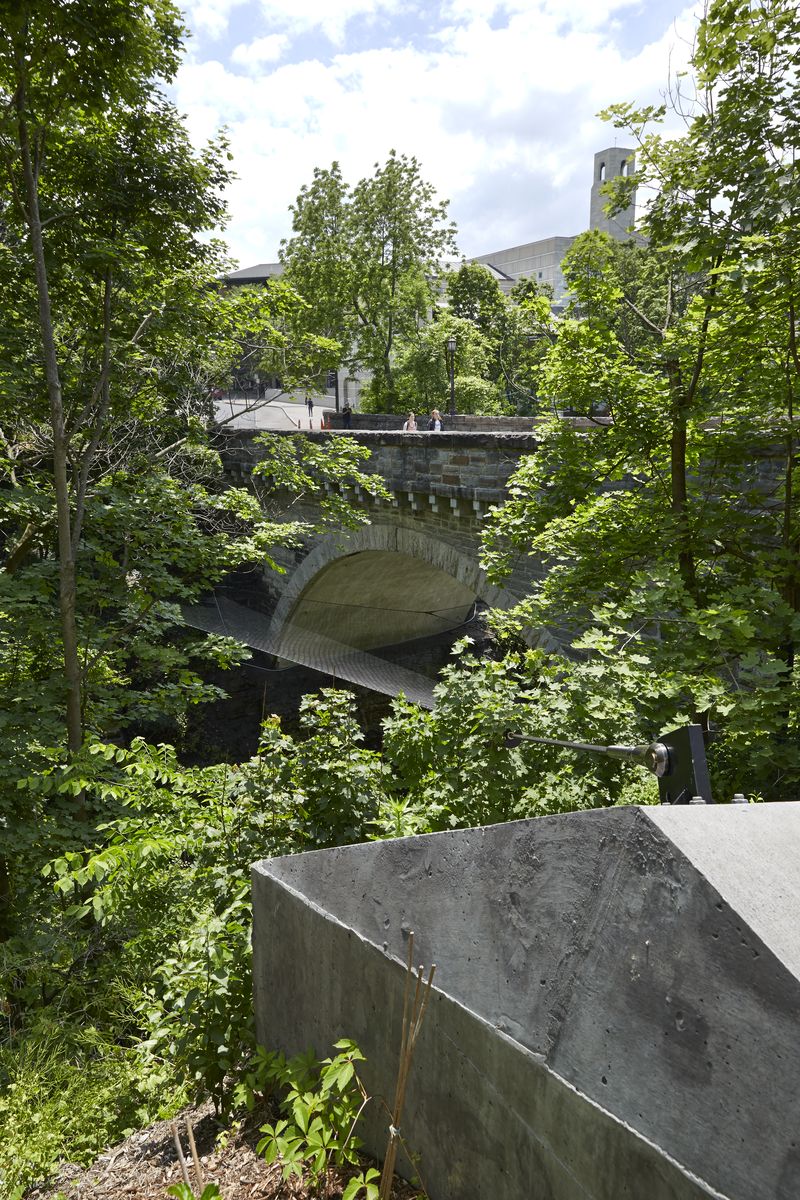Cornell University using Safety Nets Webnet
Cornell is a private Ivy League university that consistently ranks among the top twenty universities all over the world.
Founded in 1865 and ranked ninth on The Princeton Review’s list of dream colleges in 2006, the university has maintained an excellent standing throughout its history.
With such a reputation to tote, Cornell’s Ithaca campus was quick to act when three suicides shook the university in 2010.
A collaborative project between the university architects and a Boston-based firm sought to improve student safety without cutting out Ithaca’s scenic views. The product they chose for their Bridge Safety Nets was Jakob’s Webnet Wire Mesh.
The Problem: Student Safety at the Bridges in Ithaca Campus
In 2010, three students committed suicide by jumping off the bridges in Ithaca campus. Two of these students jumped off the Thurston Bridge and took a 70 feet fall into the gorge below.
The suicide statistics of Ithaca are significant: between 1990 and 2010, twenty seven people, including fifteen students took their lives by jumping off Cornell, Ithaca’s idyllic bridges.
Even though Cornell University has maintained that its suicide rates are normal for a college, it was quick to act to secure its students safety.
In the days following the 2010 suicides, black fencing came up around the campus, rising vertically up to 5 feet in the air and locking out Ithaca’s natural bounties from the students and the staff. It was evident that a better solution was needed.
The Challenge: Providing Safety at Bridges Without Obstructing Views
Cornell’s Ithaca campus sits on what was originally the founder’s farmland and much of which has been retained in its original conditions. It neighbor, Cornell Plantations is a botanical garden sprawled across 4300 acres, covering 2400 acres on the East Hill and in surrounding areas, the campus is also in the vicinity of the Cayuga Lake.
Its bridges are perched atop two scenic gorges: Fall Creek and Cascadilla. While securing student safety was the prime concern, keeping Ithaca’s serene views accessible to the staff and students was also important. The bridges seemed to need protective but invisible blanket around them.
The Solution: Horizontal Safety Nets Using Webnet
The original sketch plans presented by the Cornell University to the Ithaca’s Planning and Development Board proposed erecting curved metal bars rising vertically from the bridges and erecting vertical Bridge Safety Nets at the edges.
The board asked the University to revise its sketch plans and passed them in November, 2011 after concluding that the new plans would not pose a negative impact on the environment and forwarded them to Common Council, Ithaca Landmarks Preservation Commission (ILPC) for approval.
Cornell University Safety Nets Webnet
Horizontal nets were to be installed at six bridges including Beebe Dam Bridge, Trolley Bridge, and Stone Arch Bridge with only the Suspension Bridge getting vertical netting.
The project was completed in 2012, the black fences were taken down and after two long years, the views of Ithaca were once again available to the students.
University architect, Gilbert Delgado and associate university architect, Andrew Magre worked with Boston-based NADAAA architects to develop the plans for Bridge Safety Nets.
The inspiration came from off-bridge netting along the Swiss bridges that have reportedly almost stopped suicides from these bridges. Ithaca’s solution includes cameras and heat sensors installed at the bridges to ascertain if a person is caught in the nets.
Cornell University Safety Nets Webnet
Ithaca bridges’ horizontal netting is made of high-tensile strength Wire Mesh from Jakob’s Webnet series.
Project Solution Description
The Wire Mesh used measures 3.0 mm x 140 mm. It was chosen in a color called Black Oxide because that provided the best visibility in the surrounding conditions.
Durable suspension cables made of stainless-steel stranded wire, construction 1 x 19 in sized from 16 mm to 26 mm in diameter were used.
Instead of installing one long length of Wire Mesh, sections of Webnet were stretched taut between horizontal poles splicing the bridges at regular intervals.
The Webnet Wire Mesh is designed without any joints and can be contracted or pulled open like an accordion.
This made them ideal for comfortably supporting the weight of any loads: human or material that may fall off Ithaca Cornell’s bridges in the future.
The safety nets, because of being placed horizontally are literally invisible from the line of sight of people passing on the bridge, and virtually invisible when anyone looks through them.
Student safety, specifically suicide prevention is one of the most daunting challenges faced by universities today. A campus like Cornell University, Ithaca that has considerable natural beauty surrounding it must strike a balance between providing student safety and retaining its environment.
Jakob’s Rope Systems is glad at having helped the university achieve a favorable equation between the two factors.
Jakob Webnet Wire Mesh Series are the definite solution to material choice for installing Bridge Net Safety structures in public infrastructure.

Horizontal nets were to be installed at six bridges including Beebe Dam Bridge, Trolley Bridge, and Stone Arch Bridge with only the Suspension Bridge getting vertical netting.
The project was completed in 2012, the black fences were taken down and after two long years, the views of Ithaca were once again available to the students.
University architect, Gilbert Delgado and associate university architect, Andrew Magre worked with Boston-based NADAAA architects to develop the plans for Bridge Safety Nets.
The inspiration came from off-bridge netting along the Swiss bridges that have reportedly almost stopped suicides from these bridges. Ithaca’s solution includes cameras and heat sensors installed at the bridges to ascertain if a person is caught in the nets.

Ithaca bridges’ horizontal netting is made of high-tensile strength Wire Mesh from Jakob’s Webnet series.
Project Solution Description
The Wire Mesh used measures 3.0 mm x 140 mm. It was chosen in a color called Black Oxide because that provided the best visibility in the surrounding conditions.
Durable suspension cables made of stainless steel stranded wire, construction 1 x 19 in sized from 16 mm to 26 mm in diameter were used.
Instead of installing one long length of Wire Mesh, sections of Webnet were stretched taut between horizontal poles splicing the bridges at regular intervals.
The Webnet Wire Mesh is designed without any joints and can be contracted or pulled open like an accordion.
This made them ideal for comfortably supporting the weight of any loads: human or material that may fall off Ithaca Cornell’s bridges in the future.
The safety nets, because of being placed horizontally are literally invisible from the line of sight of people passing on the bridge, and virtually invisible when anyone looks through them.
Student safety, specifically suicide prevention is one of the most daunting challenges faced by universities today. A campus like Cornell University, Ithaca that has considerable natural beauty surrounding it must strike a balance between providing student safety and retaining its environment.
Jakob’s Rope Systems is glad at having helped the university achieve a favorable equation between the two factors.
Jakob Webnet Wire Mesh Series are the definite solution to material choice for installing Bridge Net Safety structures in public infrastructure.
